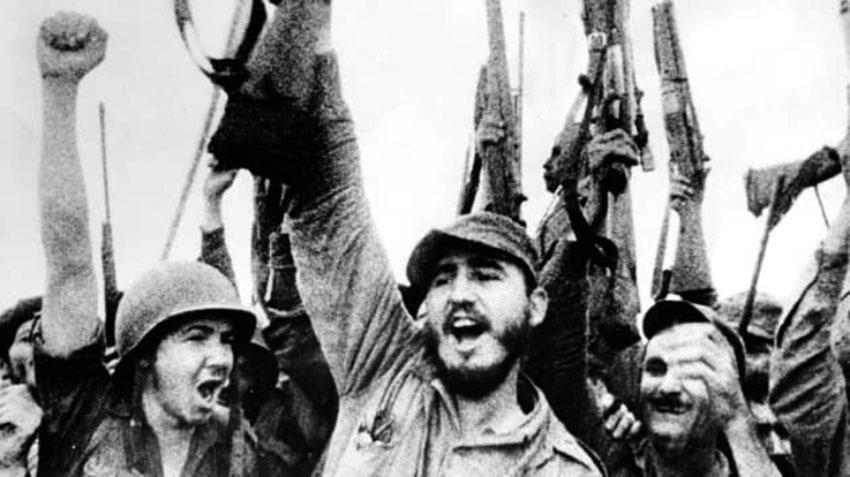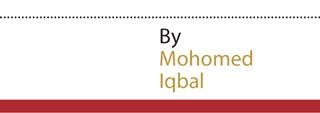Reply To:
Name - Reply Comment

 January 1 is celebrated in Cuba as the day of liberation. This year marks 63 years of the founding of the revolutionary government of Cuba by its historic leader Fidel Castro Ruz. The previous military ruler Fulgencio Batista fled Cuba on Dec 31, 1958.
January 1 is celebrated in Cuba as the day of liberation. This year marks 63 years of the founding of the revolutionary government of Cuba by its historic leader Fidel Castro Ruz. The previous military ruler Fulgencio Batista fled Cuba on Dec 31, 1958.
Studying about the Cuban liberation struggle is an inspiration to all freedom-loving people. The history of Cuba is full of struggles. The first war of independence was started by Carlos Manuel Cespedes who being a land owner himself freed the slaves and made them to join the battle against the Spanish colonizers. This went on for 10 years (1868-1878). The architect of the second war of independence was Jose Marti (1895-1898). Though Jose Marti was killed in action, the battle was continued by Maximo Gomez and Antonio Maceo who were veterans from the first war of independence. In December 1898, the US and Spain signed a peace treaty in Paris which led to the withdrawal of the Spanish colonizers from Cuba. But the Platt Amendment of 1901 gave the USA the authority to interfere in the political, administrative and military affairs of Cuba.
Pre -revolutionary Cuba was famous for its beaches, sugar plantations, casinos and gambling, prostitution and tourism. Cuba had a large population that was unemployed and poverty- stricken. Young Fidel was actively involved in student and youth politics. He was affiliated to Eduardo Chibas and his Orthodox party through which had achieved publicity as a strong advocate of social justice.
The elections that were scheduled for the March 10, 1952 were cancelled by the military ruler Fulgencio Batista. The political evolution of Cuba called for a new movement to change the US domination in Cuban politics. Fidel Castro identified the need to organise the masses and educate them in the faith of freedom and dignity which had roots from Jose Marti, the architect of Cuban independence.
Fidel and his brother Raul with around 160 youth decided to attack the Moncada garrison in July 1953. This attack was an eye opener to the Cuban people who were disgusted with the corrupt regime of Batista. The Moncada attack failed and the leaders were arrested. Later due to public pressure Batista had to pardon and release the prisoners. Fidel and Raul set off to Mexico and in Mexico, Fidel formed a rebel army known as the ‘July 26th Movement’. The Argentine medical doctor Ernesto Che Guevara was inspired by the Cuban rebels and he too joined the rebel army. They set sail to Cuba in the historic yacht ‘Granma” in 1956. Batista was tipped off of the arrival of Granma. The yacht was attacked and out of nearly 80 combatants only 12 survived. They regrouped in the Sierra Maestra mountains. The determination of the Cuban people and the just struggle led by Fidel Castro saw the American puppet dictator Batista fleeing Cuba on December 31, 1958.
The victorious rebel army entered the second largest city, Santiago de Cuba, on January 1, 1959. On January 2, a general strike was called and the military regime collapsed. On January 8, 1959 Fidel reached Havana after a triumphant march across the island. Fidel assumed the post of Commander- in- Chief of the Revolutionary Armed forces. The changes that the revolutionary government initiated is unimaginable. Eradicating illiteracy in a short time, free health care, free housing, free education and a strong social welfare system are solid evidences of the achievements of the Cuban revolution.
The Cuban revolution and the reforms initiated by the revolutionary government was to the disliking of the USA. In the early days of the Cuban revolution the US President Eisenhower approved a CIA covert operation against Cuba. In December 1959, Colonel J.C. King, head of the CIA’s western hemisphere sends a memo to CIA chief Allen Dulles about the possibility of eliminating Fidel. Since then there had been nearly 600 attempts on Fidel’s life. The CIA continuously recruited Cuban exiles and trained them for paramilitary attacks against Cuba.
The Revolutionary government nationalized US businesses, oil refineries, sugar mills and telephone companies at the request of the working people. On August 28,1959, USA imposed an embargo on trade with Cuba. Lester Mallory was a bureaucrat in the US state department in 1960. In his observations he wrote that the Cuban revolution had broad support among the Cuban population and that there was basically no opposition domestically in Cuba, and that to overthrow the Cuban revolution US needs to make the Cuban people surrender due to hunger by imposing economic pressure.
In December 1898, the US and Spain signed a peace treaty in Paris which led to the withdrawal of the Spanish colonizers from Cuba. But the Platt Amendment of 1901 gave the USA the authority to interfere in the political, administrative and military affairs of Cuba
The twelve US Presidents who came to office since the Cuban revolution have tightened the embargo. The last four years of President Donald Trump had 235 new actions implemented against Cuba in a variety of sections. The blockade is something that impacts every single sector in Cuban life. From education, to public health, to agriculture and in trade. This also brings hardship to US citizens whose families are in Cuba. No international financial institutions such as the World Bank or the IMF have dealings with Cuba.
The Cuban revolution took place when the Cold War was at its peak. The dismantling of the Soviet Union put an end to the Cold War mentality. The sanctions imposed on Cuba are illogical. The achievements of the Cuban people in reaching the goals set by UN agencies in health care, environment, education are commendable. During the time of the Covid 19 pandemic, the Henry Reeves Medical Brigade of Cuba volunteered to give its medical services to nearly 40 countries. Cuba also produced five vaccines out of which three have been approved by the World Health Organisation for emergency use.
The current US President Joe Biden and his administration can make changes to come out of their cold war mentality and remove the sanctions on Cuba.
Viva Cuba!